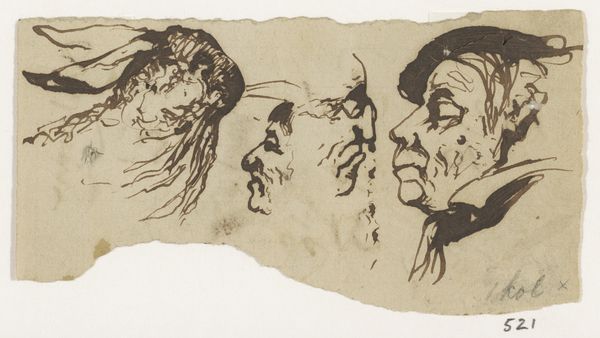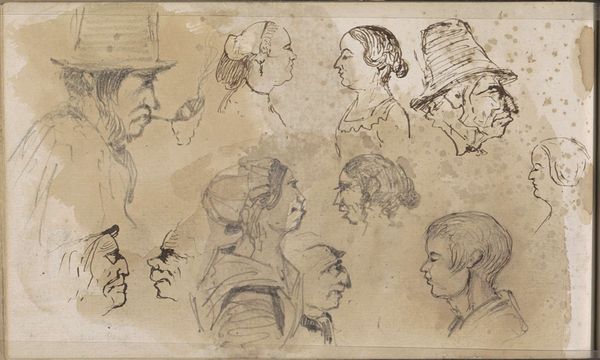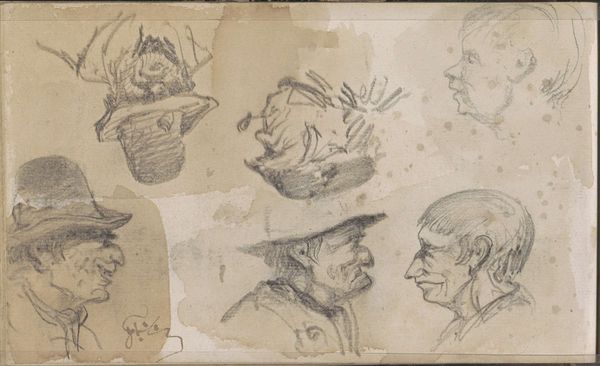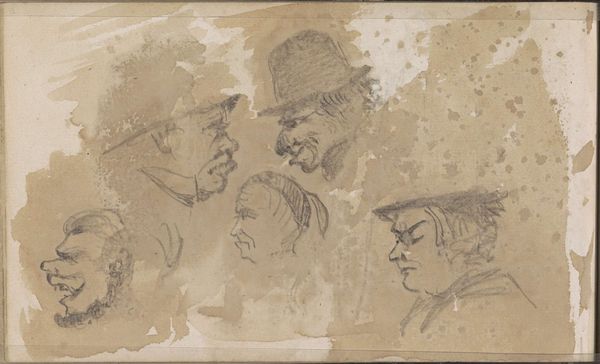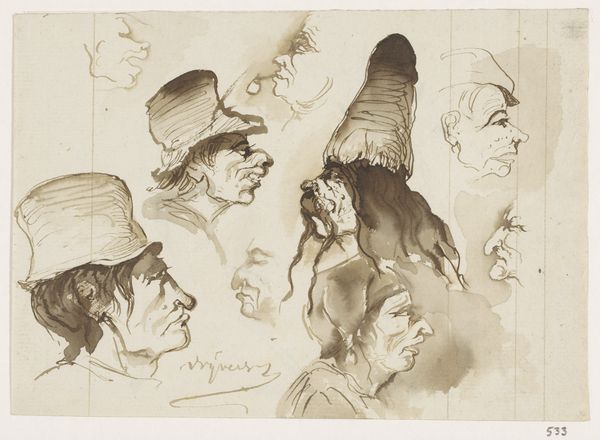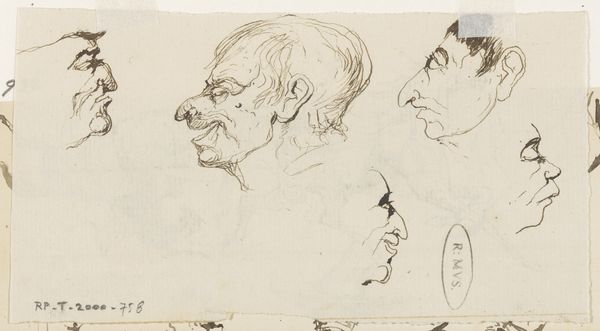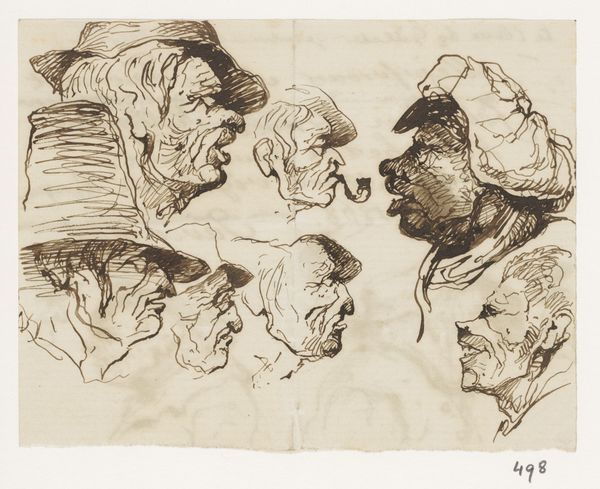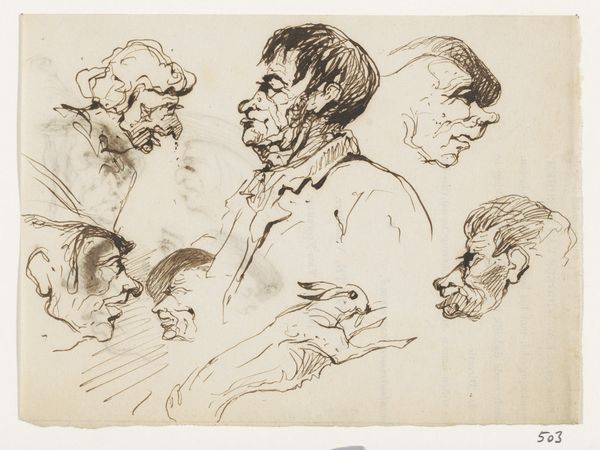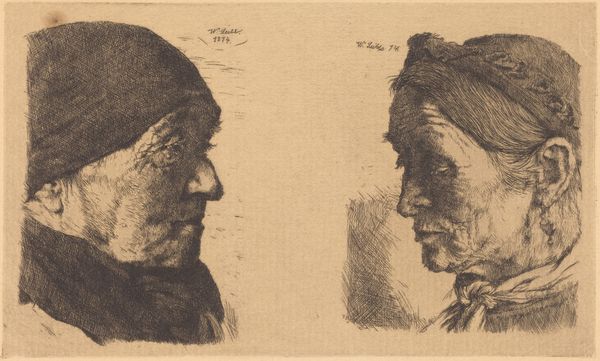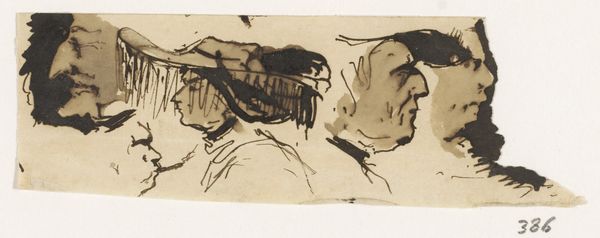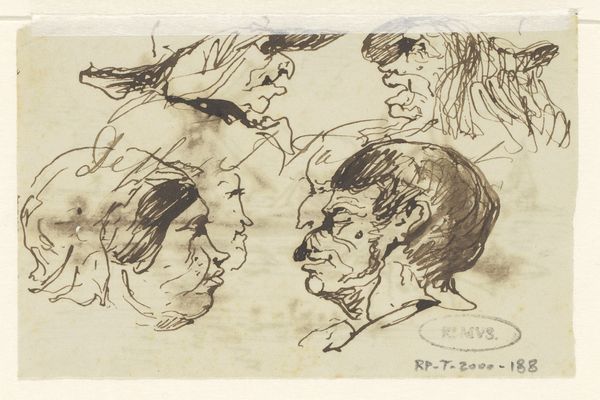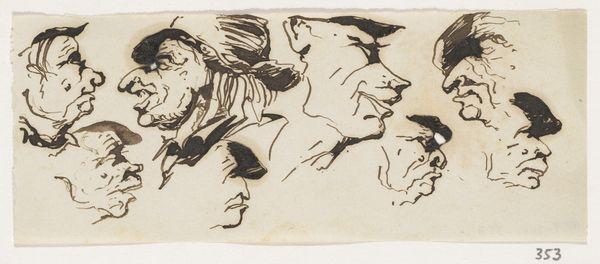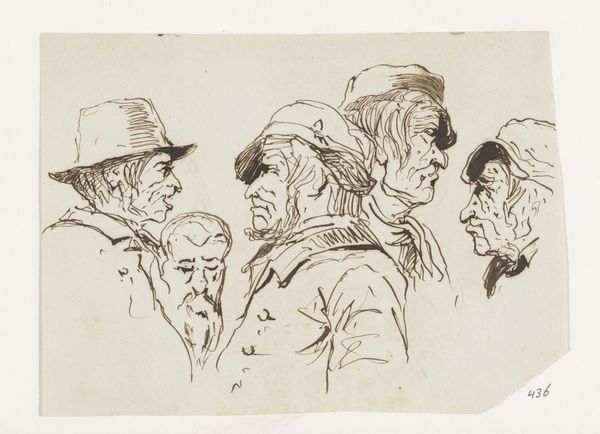
drawing, paper, pencil
#
portrait
#
drawing
#
toned paper
#
light pencil work
#
self-portrait
#
pen sketch
#
pencil sketch
#
incomplete sketchy
#
figuration
#
paper
#
personal sketchbook
#
ink drawing experimentation
#
sketch
#
pen-ink sketch
#
pencil
#
sketchbook drawing
#
genre-painting
#
northern-renaissance
#
academic-art
#
sketchbook art
#
realism
Copyright: Rijks Museum: Open Domain
Curator: Immediately, I’m drawn to the life in these sketches, like stolen moments observed and quickly rendered. It has a quiet intimacy, doesn’t it? Editor: Indeed. This is "Mannen- en vrouwenkoppen," or "Men's and Women's Heads," a pencil drawing by Johannes Tavenraat, made sometime between 1864 and 1880. It's currently housed in the Rijksmuseum. Curator: Ah, Tavenraat, yes. I can see the academic style, the precision in capturing the details, the sheer number of different characterizations... Almost feels like a casting call sheet. Editor: That's interesting. He was certainly part of the realism movement. How do you see this playing out in the cultural sphere of the Netherlands? Curator: To me, realism in portraits wasn't just about capturing likeness; it was about elevating everyday people. Before photography really took hold, these sketches gave faces to the anonymous, and that had power. I’m trying to feel out each expression, though the sketchy nature also has an odd charm; they’re both precise and suggestive. Editor: Precisely! Look at how Tavenraat employs varied strokes, from soft, delicate lines to more defined marks to distinguish form and shadow on that wonderful old codger in the center, for instance. He truly draws us into their lived experience without idealization, in line with how public art challenged dominant representations. Curator: I wonder, are some of them self-portraits, maybe the dapper fellow? The sheer volume does lean in that direction. I'm fascinated by the quick capture, like jotting down a feeling more than a form. It almost has an energy that a "finished" piece sometimes lacks. Editor: It does. One can feel the hand of the artist very directly, like a diary, a page filled with glimpses of figures as observed for a second. Curator: In a way, it's this immediacy that elevates it. He is trying to hold onto the transient quality of human connection. It prompts questions, invites interaction in ways that make art truly public. Editor: Absolutely. The piece's simplicity contrasts dramatically with today's loud images. So much is there, understated but impactful in a way only realism, combined with his particular emotional approach can give.
Comments
No comments
Be the first to comment and join the conversation on the ultimate creative platform.
